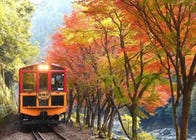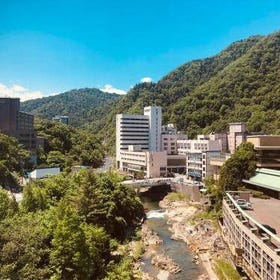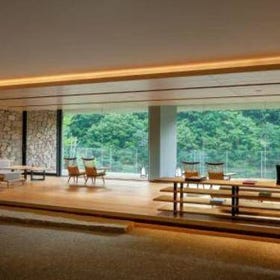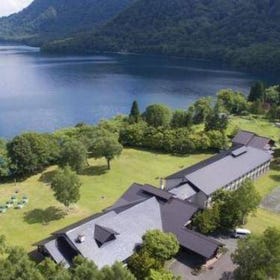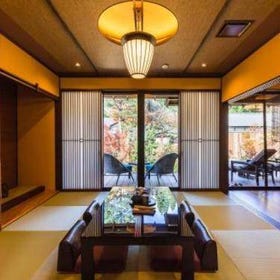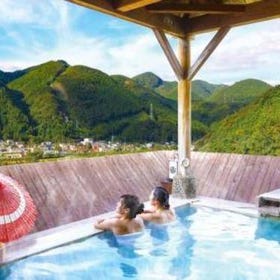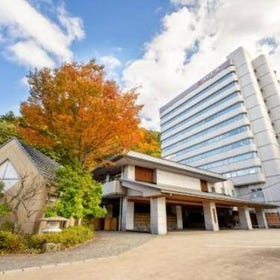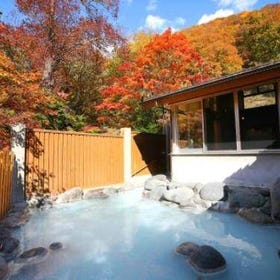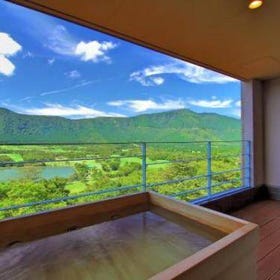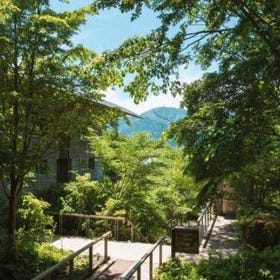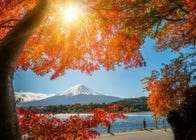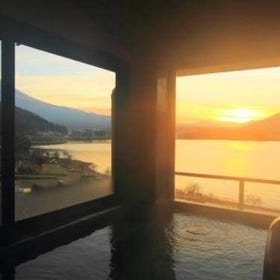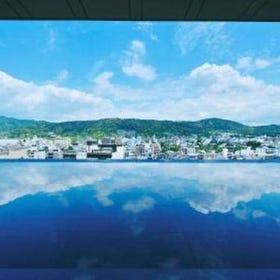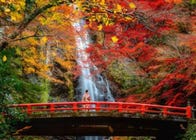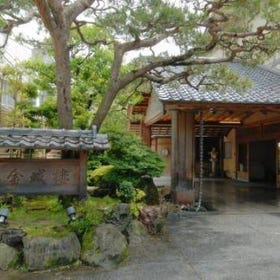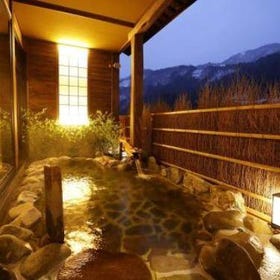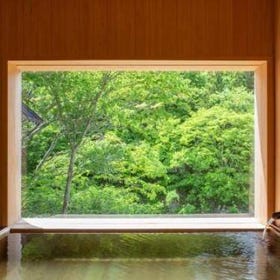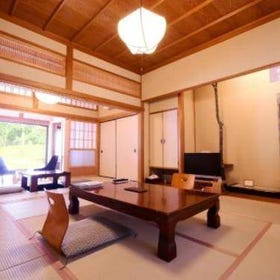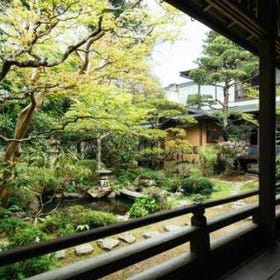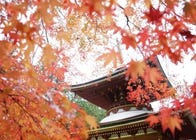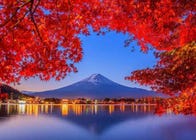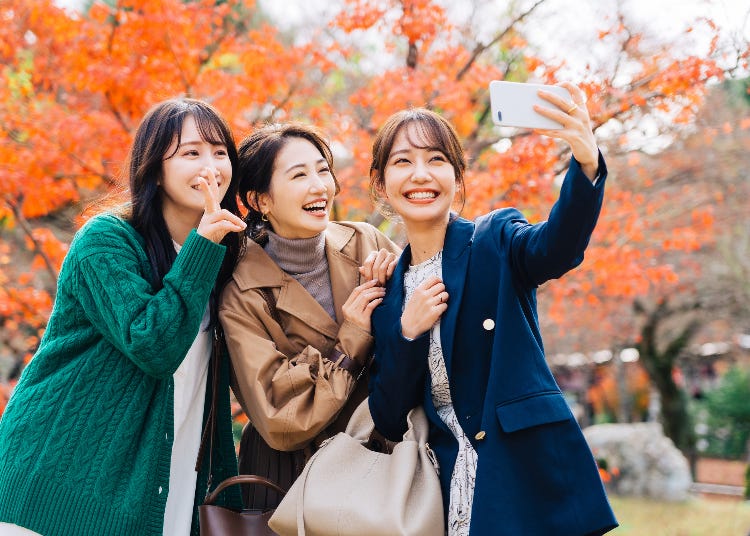
Japan is a beautiful country that offers a variety of attractions and experiences for travelers. But one of the most amazing things about Japan is its fall season, when the leaves change color and create stunning scenery.
If you've never been to Japan in fall, brace yourself for a kaleidoscope of experiences that are nothing short of spellbinding. Think crisp air tingling on your skin, a myriad of leaves switching hues like an artist’s palette, and cultural events that make the season come alive. From late September to early December, Japan transforms into an Autumnal wonderland, and it's not hard to see why this is considered one of the best times to visit the country.
Here, we will guide you through everything you need to know about visiting Japan in fall, from when to go, where to see the best foliage, what to do, and how to plan your trip.
(Main image: PIXTA)
What is autumn like in Japan?

Fall in Japan usually lasts from September to November, depending on the region and elevation.
The weather in autumn is pleasant and comfortable, with average temperatures ranging from 20.3°C to 27.5°C (69°F to 82°F) in September, 14.7°C to 22°C (59°F to 72°F) in October, and 9.6°C to 16.7°C (49°F to 62°F) in November. (According to the Japan Meteorological Agency; averages from 1991-2020.)
The humidity is lower than in summer, and the skies are clear and sunny. However, there is also a chance of rain and typhoons, especially in September and October, so it is advisable to check the weather forecast and bring an umbrella.
Autumn is also known for koyo or momiji, which means "red leaves" or "maple leaves" in Japanese. This is because the most characteristic feature of fall in Japan is the changing color of the leaves, from green to yellow, orange, red, and brown. The colors vary depending on the type of tree, such as maple, cherry, persimmon (reds and oranges), or ginkgo (yellow). The colors also change gradually from north to south and from high to low altitudes, creating a dynamic and diverse landscape.
When is the best time to visit Japan in autumn?
The best time to visit Japan in the fall depends on where you wish the catch the colors. If you want to see the fall colors at their peak, you need to check the foliage forecast, which predicts the timing and location of the color change.
Generally speaking, the foliage starts turning color in mid-late September in Hokkaido, the northernmost island of Japan, and moves southward until early December in Kyushu.
The peak season for most of Japan is from late October to mid-November. However, the exact timing may vary from year to year, depending on the weather conditions.
Why is fall a good time to visit Japan?
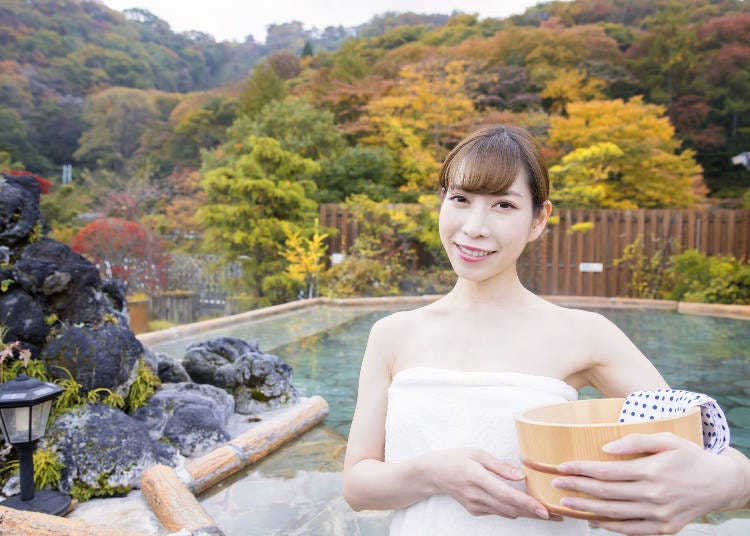
Fall is a good time to visit Japan for many reasons.
1. Enjoy the colorful scenery in many ways
First of all, the scenery is breathtaking and photogenic. You can admire the contrast between the vivid colors of the leaves and the blue sky, or the reflection of the foliage on the water. You can also enjoy the scenery from different perspectives, such as from a train, a cable car, or a boat.
3. Enjoy the outdoors
Second, fall is a great time to enjoy outdoor activities in Japan. You can go hiking or trekking in the mountains or forests, where you can immerse yourself in nature and breathe fresh air.
You can also go camping or glamping (glamorous camping) in scenic spots, where you can sleep under the stars and wake up to a stunning view.
3. Enjoy culture and cuisine
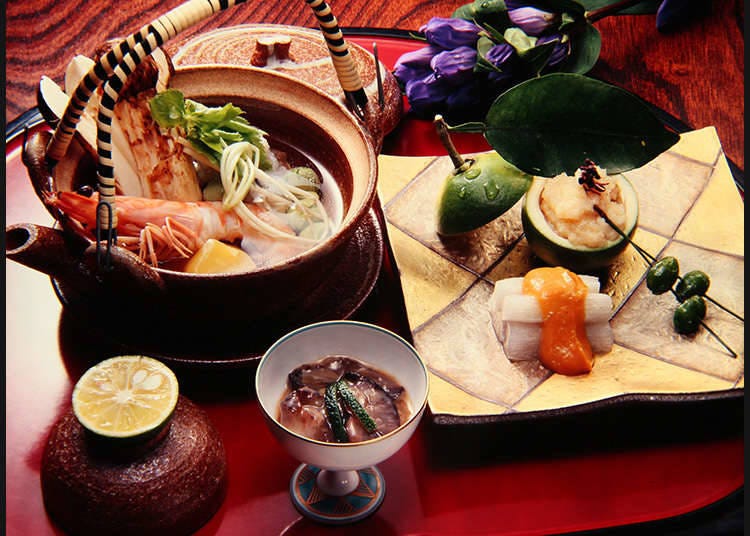
Third, fall is a rich season for Japanese culture and cuisine. You can visit temples and shrines that are decorated with lanterns and flowers for autumn festivals or special events.
You can also enjoy seasonal delicacies such as chestnuts, sweet potatoes, mushrooms, persimmons, grapes, pears, and apples. You can also taste local specialties such as soba noodles (buckwheat noodles), oden (a hot pot dish with various ingredients), or wagashi (Japanese sweets).
Japanese kaiseki cuisine is all about such seasonal ingredients, with entire courses being designed around one particular season, and some say that autumn is the best time to try kaiseki for the first time.
4. Enjoy soaking in a hot spring
The quintessential Japanese experience: an autumn onsen visit! Picture this: you're soaking in a warm, inviting thermal pool, encircled by a fiery tapestry of fall foliage. The air is crisp, and you can practically feel your soul rejuvenate as your eyes wander from the golden leaves to the crystal-clear sky.
And that's not all. Many onsen establishments elevate your sensory journey by serving up scrumptious seasonal dishes. Imagine savoring Matsutake mushroom soup or a succulent Pacific saury dish, each bite amplifying the autumnal ambiance around you. It's a holistic experience that captures the essence of Japanese fall—both visually and gastronomically.
Popular destinations for fall foliage
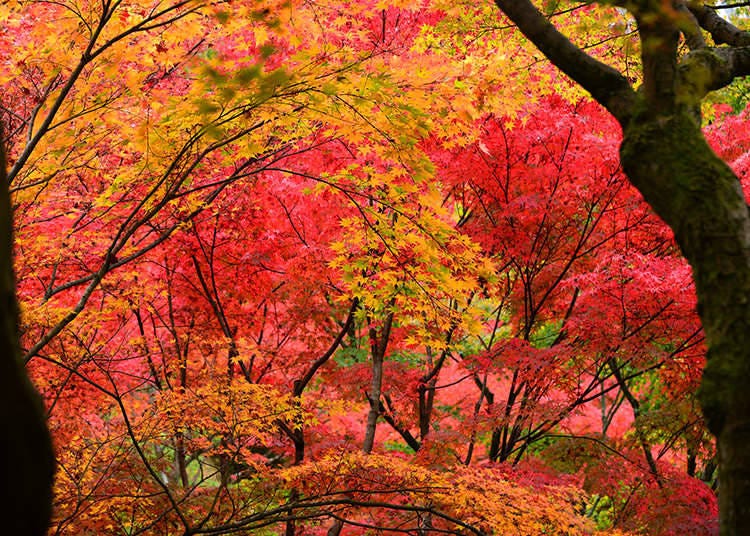
Japan has many destinations that are famous for their fall foliage. Here are some of the most popular ones, listed from north to south.
1. Jozankei Onsen, Hokkaido
Jozankei Onsen is considered by many to be the best place to witness fall foliage in Hokkaido. The hot spring town is surrounded by mountains and valleys that turn into a fiery display of reds and yellows in autumn. Visitors can enjoy soaking in the outdoor baths while admiring the scenery or take a walk along the Toyohira River or the Futami Suspension Bridge.
Recommended places to stay nearby
2. Lake Towada, Aomori
Lake Towada is a large caldera lake that straddles the border between Aomori and Akita prefectures in Tohoku. The lake is famous for its clear blue water and its stunning contrast with the autumn colors of the surrounding forests. The best way to enjoy the fall foliage here is to take a sightseeing boat cruise around the lake or drive along the Oirase Stream, a scenic river that flows from the lake.
Recommended places to stay nearby
3. Naruko Gorge, Miyagi
Naruko Gorge is one of the most spectacular gorges in Japan and a popular spot for fall foliage viewing in Tohoku. The gorge is about 100 meters deep and 2.5 kilometers long, with steep cliffs and rock formations that create a dramatic backdrop for the colorful leaves. The best time to visit is from late October to early November, when the gorge is illuminated at night.
Recommended places to stay nearby
4. Nikko, Tochigi
Nikko is a short day trip away from Tokyo and a UNESCO World Heritage Site that boasts many historical and cultural attractions, such as Toshogu Shrine, Futarasan Shrine, and Rinnoji Temple. Nikko is also an incredible natural area that outdoor enthusiasts will love. It’s great for hiking and during the fall, the many trees and forests become even more stunning when the leaves turn crimson and orange. Lake Chuzenji and Ryuzu Waterfall are two of the best spots for viewing the colorful foliage.
Recommended places to stay nearby
5. Hakone, Kanagawa
Hakone is a popular hot spring resort town that offers spectacular views of Mount Fuji and Lake Ashi. The town has many attractions that are perfect for enjoying the fall colors, such as the Hakone Ropeway, the Hakone Open-Air Museum, and the Hakone Botanical Garden of Wetlands. The best time to see fall colors here is typically late October to early November.
Recommended places to stay nearby
6. Lake Kawaguchi, Yamanashi
Lake Kawaguchi is one of the Fuji Five Lakes and is accessible as a short overnight trip from Tokyo while exploring Japan. It’s worth spending a night or two in the town on the lake, Fujikawaguchiko, to get some incredible views of Mount Fuji in the distance. One of the popular viewpoints of Mount Fuji from Lake Kawaguchi is Chureito Pagoda. In the fall, colorful leaves frame the mountain in the distance, making the view even more spectacular.
Recommended places to stay nearby
7. Kyoto, Kyoto
Kyoto is one of the cities that first-time travelers to Japan should visit for a chance to experience the historic districts, like Gion, and glimpse a slower pace of life than Tokyo. Kyoto is Japan’s cultural capital and has many beautiful spots to explore. The best time to see fall colors here is typically November and early December. Kitano Tenmangu Shrine, Eikando Temple, Tofukuji Temple, Kiyomizudera Temple, Arashiyama Bamboo Grove, and Philosopher’s Path are a few of the most popular spots to admire the foliage and take photos.
Recommended places to stay nearby
8. Kanazawa, Ishikawa
Kanazawa is a city on the coast of the Sea of Japan that has preserved its traditional charm and culture. The city is known for its samurai districts, geisha quarters, and historic gardens. One of the most famous gardens in Japan is Kenrokuen Garden, which is especially stunning in autumn when the leaves change color. The garden also has an annual light-up event at night during peak foliage season.
Recommended places to stay nearby
9. Shirakawago, Gifu
Shirakawago is a small village in the mountains of Gifu Prefecture that has a well-preserved old town with wooden buildings and quaint shops. The town is also famous for its festivals, crafts, and local cuisine. In autumn, Shirakawago offers a scenic backdrop of colorful mountains and forests that can be enjoyed by walking around the town.
Recommended places to stay nearby
10. Koyasan, Wakayama
Koyasan is a sacred mountain in Wakayama Prefecture that is the headquarters of Shingon Buddhism, one of the major sects of Japanese Buddhism. The mountain is dotted with over 100 temples and monasteries, some of which offer overnight stays for visitors who want to experience the spiritual atmosphere and vegetarian cuisine. Koyasan is also a great place to see the fall colors, as the temple grounds and the surrounding forests are filled with vibrant hues of red and yellow.
Recommended places to stay nearby
Tips for choosing a fall foliage destination
When choosing a fall foliage destination in Japan, there are some factors that you should consider.
- The timing of the color change: As mentioned earlier, the color change varies depending on the region and elevation. You should check the koyo forecast before you plan your trip, and be flexible with your dates if possible. You should also avoid weekends and national holidays, as these are the busiest times for tourists and locals.
- The accessibility and transportation: Some destinations may be more accessible and convenient than others, depending on where you are coming from and how you are traveling. You should check the availability and cost of trains, buses, taxis, or rental cars that can take you to your desired location. You should also consider the distance and time required to travel between different spots.
- The accommodation and facilities: Some destinations may have more options and variety for accommodation and facilities than others. You should check the availability and price of hotels, ryokans (traditional Japanese inns), hostels, guesthouses, or campsites that suit your budget and preference. You should also check the amenities and services that they offer, such as Wi-Fi, breakfast, parking, or laundry.
Tours & things to do in Japan in fall
Japan has many activities that you can enjoy in fall, depending on your interests and preferences. Here are some of the most common ones.
- Hiking and trekking: Japan has many hiking and trekking trails that range from easy to challenging, from urban to rural, and from short to long. Hiking and trekking are great ways to explore the nature and culture of Japan, as well as to exercise and relax. Some of the most popular hiking and trekking destinations in Japan are Mount Fuji (which is open for climbing from July to September), Kamikochi (which is a highland valley in the Northern Alps), Yakushima (which is an island that has ancient cedar forests), and Kumano Kodo (which is a network of pilgrimage routes that connect sacred sites).
- Camping: Camping is another way to enjoy the outdoors in Japan, especially in fall when the weather is mild and the scenery is beautiful. Camping can be a fun and affordable alternative to staying in hotels or ryokans, as well as a chance to experience a different lifestyle and culture. Camping can be done in designated campsites or in wild areas, depending on your preference and skill level. Some of the most popular camping destinations in Japan are Lake Motosu (which has a view of Mount Fuji), Shikotsu-Toya National Park (which has volcanic lakes and hot springs), Oze National Park (which has marshlands and alpine plants), and Okinawa Islands (which have tropical beaches and coral reefs).
- Visiting temples and shrines: Temples and shrines are important places of worship and culture in Japan, as well as architectural and artistic wonders. Visiting temples and shrines can be a way to learn about the history, religion, and customs of Japan, as well as to appreciate the beauty and craftsmanship of the buildings and gardens. Temples
and shrines often have special events or ceremonies in fall, such as light-ups, festivals, or rituals. Some of the most famous temples and shrines in Japan are Kinkaku-ji Temple (which is covered with gold leaf), Fushimi Inari Shrine (which has thousands of red torii gates), Todai-ji Temple (which has a giant bronze Buddha statue), and Meiji Shrine (which is dedicated to Emperor Meiji). - Enjoying the food: Food is one of the best things about traveling in Japan, as it offers a variety of flavors, textures, ingredients, and styles. Food is also a reflection of the seasons, regions, traditions, and innovations of Japan. Enjoying the food in Japan can be a way to taste the diversity and richness of Japanese cuisine, as well as to satisfy your appetite
and curiosity. Food can be enjoyed in different settings, such as restaurants, cafes, street stalls, markets, or convenience stores. Some of the most popular foods in Japan are sushi (raw fish on rice), ramen (noodle soup), tempura (deep-fried seafood or vegetables), yakitori (grilled chicken skewers), okonomiyaki (savory pancake), mochi (rice cake), matcha (green tea powder), sake (rice wine), etc.
Recommended autumn tours
-
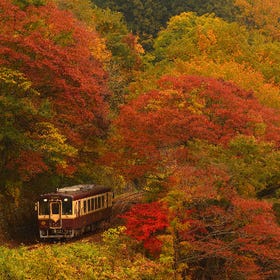 Autumn Maple Leaves Sightseeing Day Tour from Tokyo
Autumn Maple Leaves Sightseeing Day Tour from Tokyo
(Image: Klook) -
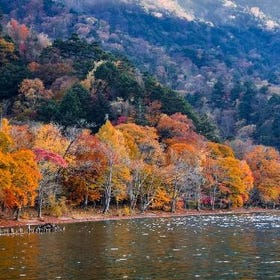 Nikko Day Tour from Tokyo
Nikko Day Tour from Tokyo
(Image: Klook) -
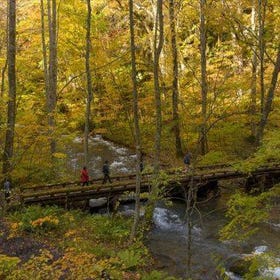 Aomori Autumn Day Tour: Oirase Gorge, Lake Towada, Hirosaki Park and Neputa Village
Aomori Autumn Day Tour: Oirase Gorge, Lake Towada, Hirosaki Park and Neputa Village
(Image: KKday) -
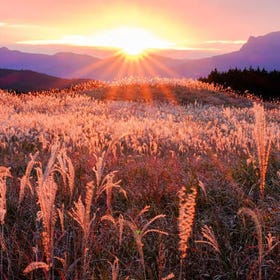 Nara Autumn Leaves Bus Tour from Osaka with Sushi Making Experience
Nara Autumn Leaves Bus Tour from Osaka with Sushi Making Experience
(Image: Klook) -
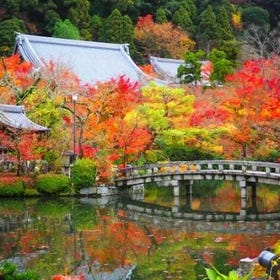 Hidden Kyotogenic For Autumn with Subway 1 Day Pass Tour
Hidden Kyotogenic For Autumn with Subway 1 Day Pass Tour
(Image: KKday) -
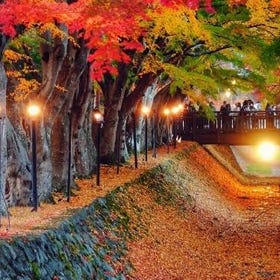 Mt. Fuji & Lake Kawaguchi Autumn Maple Day Tour from Tokyo
Mt. Fuji & Lake Kawaguchi Autumn Maple Day Tour from Tokyo
(Image: Klook) -
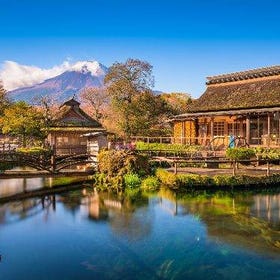 Mt. Fuji Private Customizable One Day Trip from Tokyo
Mt. Fuji Private Customizable One Day Trip from Tokyo
(Image: Klook)
Autumn and Japanese culture
Autumn in Japan is more than just a season; it's a cultural symphony that enriches the senses. It's a time for "Tsukimi," the Moon-Viewing Festival, a moment to celebrate the harvest and give thanks. Here are some other interesting points about autumn in Japanese culture.
Higan: The Equinoctial Weeks
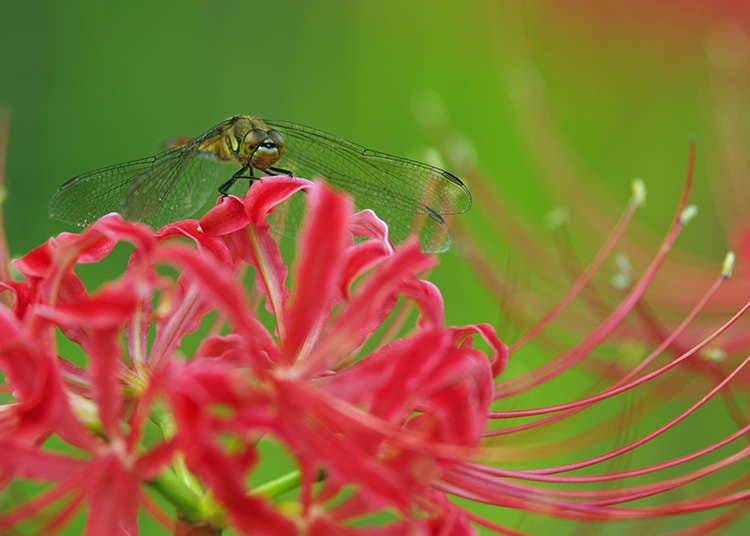
Higan describes the week around both the vernal and the autumnal equinox, which respectively mark the days when winter transitions to spring and summer turns into autumn.
During the autumnal equinox, one of the most beautiful sights is the vivid red amaryllis (red spider lily), and it is a custom for people to visit the graves of their ancestors.
After their final resting places have been cleaned properly, people leave behind flowers and bean cakes called ohagi. Made from boiled rice and formed into small dumplings, the cakes are then covered with sweet bean paste, making for a delicious and traditional Japanese treat.
Sports Festivals

The pleasant temperatures of autumn have many school hold so-called undokai, which are sports festivals. The pupils are usually divided into the “red team” and the “white team,” competing against each other in various sports and other fun activities, such as racing and dancing. This is why the second Monday in October also is the national Sports Day, a national holiday on which a lot of athletic events are being held before and after.
Cultural Festivals
Apart from beautiful colors, delicious food, and pleasant temperatures, autumn is also called the “season of art.” Next to athletic events, a lot of cultural festivals are taking place at schools and universities, showcasing various performances and artworks done by the students. Catering to hungry visitors are various food stalls offering delicious snacks such as chow mein or crepes, everything prepared and sold by students themselves. These kind of festivals are always a highlight for the respective neighborhood or town, attracting alumni, locals, and tourists alike.
Koromogae: the Seasonal Change of Clothing

The changing seasons play such a huge role in people’s lives, Japan even does have a special word for the changing of clothes in accordance with the beginning of autumn: “koromogae.” This custom is actually centuries old and dates back to the Heian period, when the Japanese aristocracy would switch from summer dresses to winter garments. This habit is especially evident when looking at school and police uniforms: every year on June 1st, students and officers start wearing summer uniforms while going back to winter uniforms on October 1st. In Japanese homes, the closets usually undergo the biggest changes, with the airy summer garments being stowed away to make room for comfy sweatshirts and warm jackets.
From vivid leaves to vibrant festivals, autumn in Japan weaves tradition, nature, and gastronomy into an unforgettable tapestry of experiences. Ready to dive into this captivating season?
*Prices and options mentioned are subject to change.
*Unless stated otherwise, all prices include tax.
Limited time offer: 10% discount coupons available now!
Recommended places for you
-
Appealing
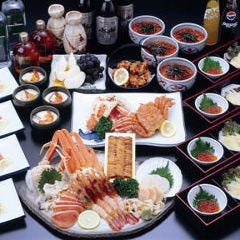
Rukku and Uohei
Izakaya
Sapporo / Chitose
-
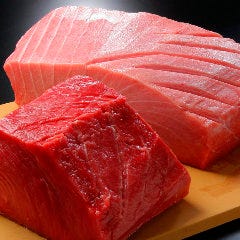
Kamesushi Sohonten
Sushi
Umeda, Osaka Station, Kitashinchi
-
Goods

Yoshida Gennojo-Roho Kyoto Buddhist Altars
Gift Shops
Nijo Castle, Kyoto Imperial Palace
-

Baeren Brewery Co., Ltd.
Other Sightseeing
Morioka, Hiraizumi And Hachimantai
-

Jukuseiniku-to Namamottsuarera Nikubaru Italian Nikutaria Sannomiya
Izakaya
Kobe, Sannomiya, Kitano
-
Menu
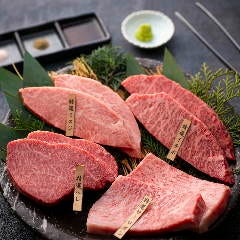
ISHIDAYA Hanare
Yakiniku
Kobe, Sannomiya, Kitano
-

12 Unique & Fun Tokyo Food Tours to Enjoy in 2024
-

Professional Photos Even Beginners Can Shoot! 10 Tips for Taking Stunning Cherry Blossom Photos
-

Step Into the Story: Inside Immersive Fort Tokyo
-

The CASIO S100: How CASIO's Masterpiece Calculator Redefines Business Elegance With Japan-Made Reliability
-

Where to Eat in Shibuya: 14 Must-Try Restaurants for Yakiniku, Sushi, Izakayas, Cafes and More
-

Where to Eat in Yokohama: 10 Must-Try Restaurants for Yakiniku, Izakayas, Unique Dining & More
-

Autumn in Tokyo 2024: 16 Best Places to See Fall Foliage in Tokyo
-
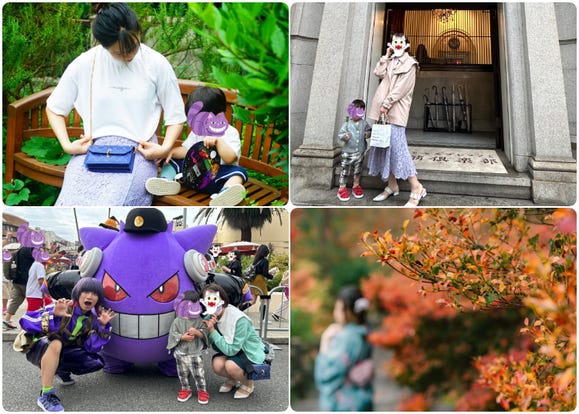
Visiting Osaka in Autumn: What to Wear & Must-Visit Attractions in September, October, and November
-
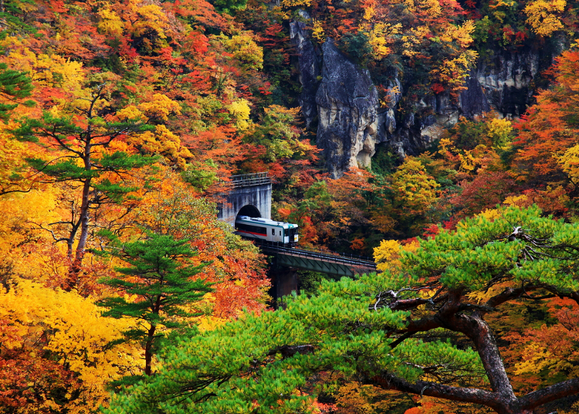
10 Must-Visit Places for Autumn Leaves in Tohoku: Naruko Gorge, Geibikei Gorge & More
-
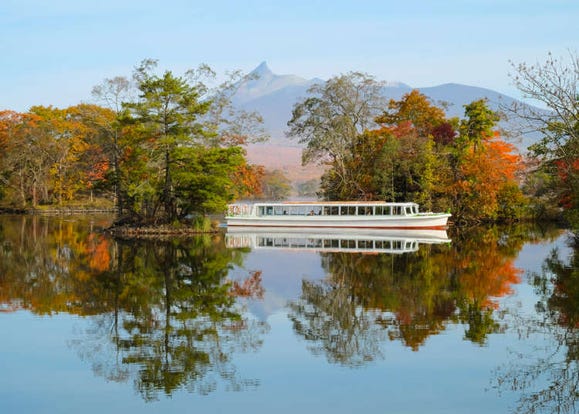
8 Mystical Spots For Autumn Leaves Near Hakodate in Hokkaido (2023)
-
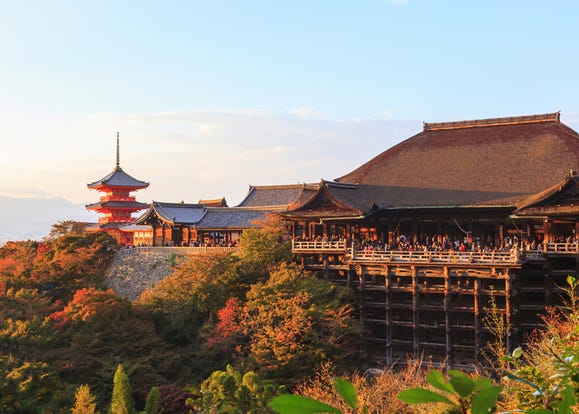
Ultimate Kiyomizudera Temple Guide: Visiting Kyoto's Most Famous Sightseeing Spot!
-
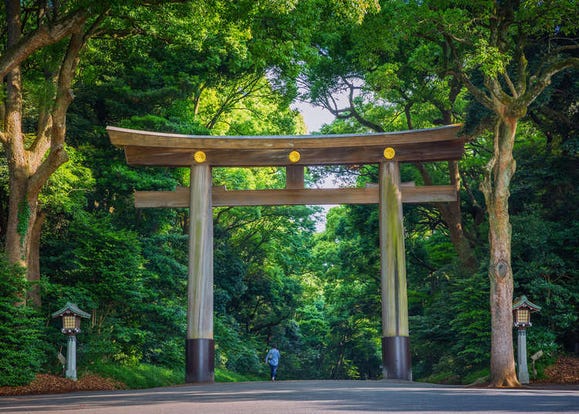
Meiji Shrine (Meiji Jingu): Exploring the Sacred Sanctuary of Peace in Bustling Tokyo
- #best sushi japan
- #what to do in odaiba
- #what to bring to japan
- #new years in tokyo
- #best ramen japan
- #what to buy in ameyoko
- #japanese nail trends
- #things to do japan
- #onsen tattoo friendly tokyo
- #daiso
- #best coffee japan
- #best japanese soft drinks
- #best yakiniku japan
- #japanese fashion culture
- #japanese convenience store snacks















